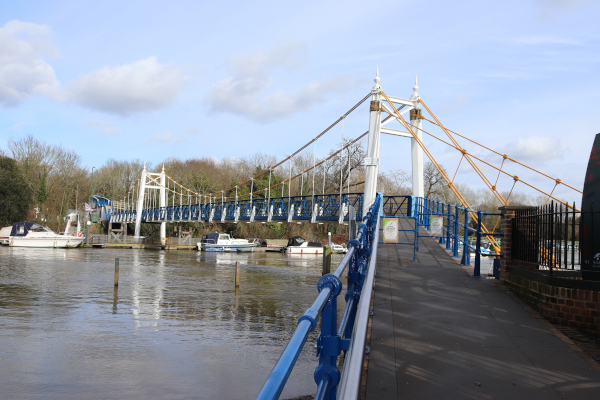Located in the heart of the bustling city, Grade II Listed 1889 Footbridges stand as magnificent architectural wonders that transport visitors back in time with their historical significance and intricate design details. These footbridges, dating back to 1889, serve not only as functional passageways but also as beautiful works of art that showcase the craftsmanship and aesthetic sensibilities of a bygone era. Exploring these footbridges offers a unique opportunity to appreciate the architectural heritage and engineering prowess of the past. In this article, we delve into the enchanting world of Grade II Listed 1889 Footbridges, highlighting their historical importance and architectural charm.
Unveiling the History Behind Grade II Listed 1889 Footbridges
The history of the Grade II Listed 1889 Footbridges dates back to the late 19th century when they were constructed to provide pedestrians with safe passage across busy thoroughfares and water bodies. These footbridges were not merely utilitarian structures but were designed with meticulous attention to detail, incorporating elements of Gothic Revival and Victorian architecture. The year 1889 marks a significant period in architectural history, and these footbridges serve as tangible reminders of the craftsmanship and ingenuity of the era.
Architectural Marvels: Design Features and Aesthetic Appeal
One of the standout features of Grade II Listed 1889 Footbridges is their ornate design and architectural detailing. From intricate wrought iron railings to decorative flourishes adorning the pillars, every element of these footbridges showcases the craftsmanship and artistry of the Victorian era. The intricate latticework, elegant curves, and delicate patterns found on these footbridges add to their aesthetic appeal, making them a sight to behold for architecture enthusiasts and history buffs alike.
Preservation Efforts and Heritage Importance
Over the years, efforts have been made to preserve and protect Grade II Listed 1889 Footbridges as important landmarks of architectural heritage. These footbridges serve as a link to the past, offering a glimpse into a time when craftsmanship and architectural design were held in high regard. By safeguarding these structures, we not only honor the legacy of the past but also ensure that future generations can appreciate and learn from the architectural wonders of yesteryears.
Exploring Grade II Listed 1889 Footbridges: A Journey Through Time
Visiting Grade II Listed 1889 Footbridges is more than just a stroll across a pedestrian walkway; it is a journey through time and history. As you walk along these footbridges, take a moment to admire the intricate details, the elegant curves, and the timeless beauty that define these architectural marvels. Allow yourself to be transported back to the Victorian era and imagine the hustle and bustle of daily life that once unfolded on these historic pathways.
Conclusion
In conclusion, Grade II Listed 1889 Footbridges stand as a testament to the architectural prowess and design excellence of the past. These footbridges not only serve a practical purpose but also captivate the imagination with their beauty and historical significance. By exploring and appreciating these architectural wonders, we can gain a deeper appreciation for the rich heritage and craftsmanship that have shaped our built environment. Next time you find yourself near a Grade II Listed 1889 Footbridge, take a moment to pause, look up, and marvel at the exquisite beauty of these timeless structures.



